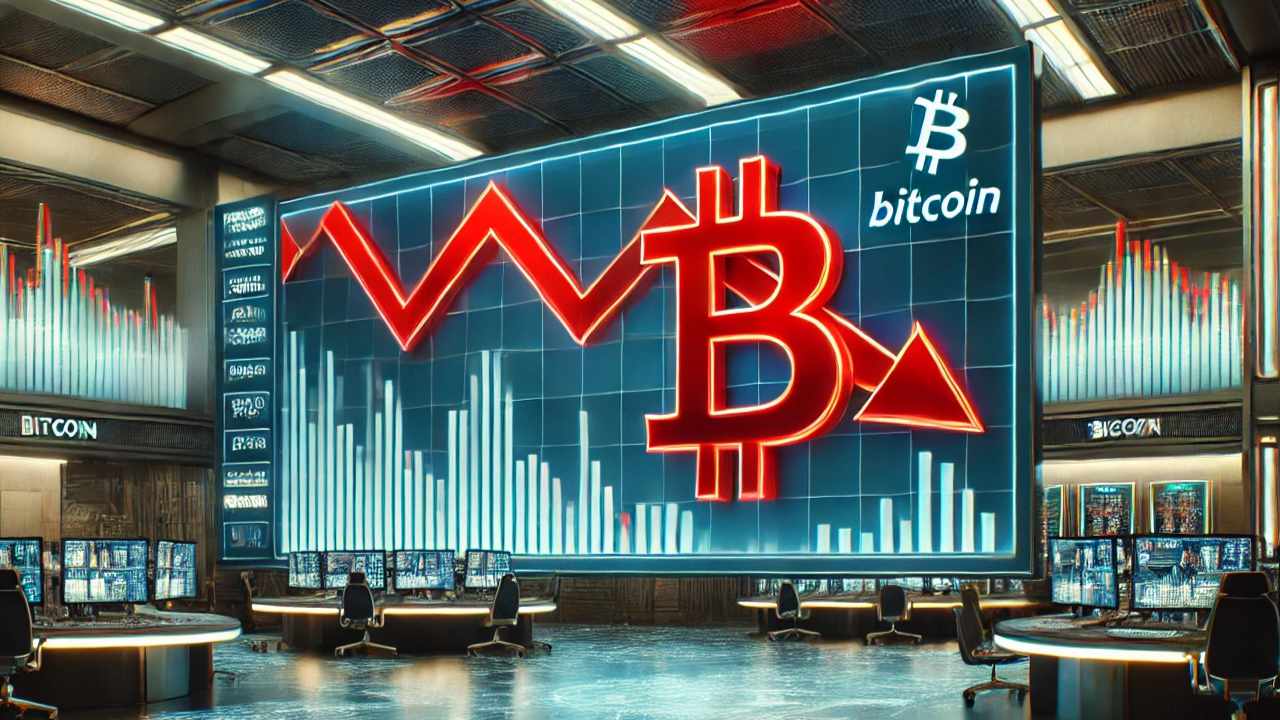Crypto
Cryptocurrency Price Today: Bitcoin Remains Above $26,000, XDC Becomes Top Gainer

Bitcoin (BTC), the oldest and most valued cryptocurrency in the world, managed to float above the $26,000 mark as top coins register minor movements. Popular altcoins — including the likes of Ethereum (ETH), Dogecoin (DOGE), Ripple (XRP), Litecoin (LTC), and Solana (SOL) — traded sideways across the board. As per CoinMarketCap, the market’s fear and greed index stood at 35 (out of 100). The XDC Network (XDC) token emerged to be the biggest gainer of the lot, with a 24-hour jump of over 8 percent. SUI became the biggest loser, with a 24-hour dip of over 4 percent.
The global crypto market cap stood at $1.05 trillion at the time of writing, registering a 24-hour gain of 0.14 percent.
Bitcoin (BTC) Price Today
Bitcoin price stood at $26,064.99, registering a 24-hour gain of 0.20 percent, as per CoinMarketCap. According to Indian exchange WazirX, BTC price stood at Rs 23 lakh.
Ethereum (ETH) Price Today
ETH price stood at $1,651.38 marking a 24-hour gain of 0.13 percent at the time of writing. As per WazirX, Ethereum price in India stood at Rs 1.47 lakh.
Dogecoin (DOGE) Price Today
DOGE registered a 24-hour gain of 0.99 percent, as per CoinMarketCap data, currently priced at $0.06231. As per WazirX, Dogecoin price in India stood at Rs 5.57.
Litecoin (LTC) Price Today
Litecoin saw a 24-hour jump of 0.88 percent. At the time of writing, it was trading at $65.35. LTC price in India stood at Rs 5,830.
Ripple (XRP) Price Today
XRP price stood at $0.5206, seeing a 24-hour gain of 0.44 percent. As per WazirX, Ripple price stood at Rs 46.
Solana (SOL) Price Today
Solana price stood at $20.49, marking a 24-hour dip of 0.12 percent. As per WazirX, SOL price in India stood at Rs 1,810.08.
Top Crypto Gainers Today (August 29)
As per CoinMarketCap data, here are the top five crypto gainers over the past 24 hours:
XDC Network (XDC)
Price: $0.0564
24-hour gain: 8.48 percent
Curve DAO Token (CRV)
Price: $0.4809
24-hour gain: 4.54 percent
Avalanche (AVAX)
Price: $10.43
24-hour gain: 3.70 percent
Polkadot (DOT)
Price: $4.61
24-hour gain: 3.23 percent
Theta Network (THETA)
Price: $0.6188
24-hour gain: 3.21 percent
Top Crypto Losers Today (August 29)
As per CoinMarketCap data, here are the top five crypto losers over the past 24 hours:
Sui (SUI)
Price: $0.5268
24-hour loss: 4.61 percent
Bone Shibaswap (BONE)
Price: $1.30
24-hour loss: 4.60 percent
Hedera (HBAR)
Price: $0.05461
24-hour loss: 4.11 percent
Pepe (PEPE)
Price: $0.0000008517
24-hour loss: 2.72 percent
Quant (QNT)
Price: $100.73
24-hour loss: 2.67 percent
What Crypto Exchanges Are Saying About Current Market Scenario
Mudrex co-founder and CEO Edul Patel told ABP Live, “Bitcoin experienced a drop below $26,000 over the past 24 hours, but swift recovery pushed it back above, settling at approximately $26,070. This month, BTC has witnessed an 11 percent decline, driven by escalated selling pressure and the absence of fresh market catalysts. The ongoing tug-of-war between buyers and sellers implies a potential sideways trajectory, with BTC likely ranging between $25,900 and $26,300 in the immediate future. In parallel, Ethereum’s price consolidation remains between $1,640 and $1,680 levels. Overall, the crypto market looks bearish alongside traditional markets as of now.”
Shubham Hudda, Senior Manager, CoinSwitch Markets Desk, said, “The market has been witnessing one of its lowest trading volumes in a very long time as BTC (+0.2 percent) is trading in a very narrow range near the $26,000 mark. This particular bear cycle of Bitcoin has already crossed more than 500 days, making it the longest bear market in the entire crypto lifecycle.”
Rajagopal Menon, Vice President, WazirX, said, “As US Fed indicates tightening monetary policy, the crypto ecosystem goes through a price correction. With the current bearish sentiment in place, it would be difficult for BTC to break out of its current resistance levels. Macroeconomic conditions continue to make investors wary. However, Bitcoin options witness continued demand amidst this.”
Sathvik Vishwanath, CEO and co-founder of Unocoin, said, “Bitcoin is currently hovering just above the important $26,100 support level. Its price movement remains limited above the critical support at $25,900, given its inability to sustain levels above the $26,500 resistance. Currently, the cryptocurrency is trading below the 100-hour simple moving average (SMA) and below the $26,200 level, facing significant resistance at the $26,200 and $26,500 levels. A successful break of the latter hurdle could lead to an upward move with a potential target of around $27,800. However, failure to break above $26,200 could result in a decline, finding key support at $25,400 and a potential decline to $24,800 if this support level is breached.”
Shivam Thakral, the CEO of BuyUCoin, said, “Recent market data paints an intriguing picture of the crypto landscape. With a 39.27 percent surge in the last 24 hours, the total market volume has reached $24.23 billion. Notably, DeFi contributes $1.83B, comprising 7.55 percent of the overall crypto market volume. Stablecoins have taken a dominant stance, capturing $23.13 billion, equivalent to 95.44 percent of the 24-hour crypto volume. Amidst these dynamics, Bitcoin stands at $26,072.79, which highlights the evolving nature of the crypto market, where DeFi and stablecoins play significant roles alongside the enduring influence of Bitcoin”
CoinDCX Research Team told ABP Live, “The crypto market remained stable over the weekend, with the total market capitalisation hovering around $1.05 trillion. Both Bitcoin and Ethereum showed limited price movement, with Bitcoin (BTC) holding at $26,000 and Ethereum (ETH) at $1,650. The upcoming week is anticipated to bring heightened market volatility due to various significant macroeconomic events. These events, including US Job Openings, Non-Farm Employment Change, and the Unemployment Rate, are expected to have ripple effects on various assets such as Gold, the Dollar Index, US Equity Markets, and the crypto market.”
Subscribe And Follow ABP Live On Telegram: t.me/officialabplive
Disclaimer: Crypto products and NFTs are unregulated and can be highly risky. There may be no regulatory recourse for any loss from such transactions. Cryptocurrency is not a legal tender and is subject to market risks. Readers are advised to seek expert advice and read offer document(s) along with related important literature on the subject carefully before making any kind of investment whatsoever. Cryptocurrency market predictions are speculative and any investment made shall be at the sole cost and risk of the readers.

Crypto
Cryptocurrency after the European Union’s MiCA regulation | Opinion

Disclosure: The views and opinions expressed here belong solely to the author and do not represent the views and opinions of crypto.news’ editorial.
The Markets in Crypto-Assets Regulation (MiCA) marks a significant milestone in the European Union’s journey toward regulating the rapidly evolving crypto market. Its timeline and provisions hold immense importance for both crypto businesses and investors. As we approach crucial dates, starting with the application of stablecoin provisions from June 30, 2024, and the complete application of MiCA on December 30, 2024, the crypto landscape is undergoing a transformative phase.
Over the next two years
MiCA’s staggered timelines and transitional periods, extending up to June 30, 2026, imply a period of fragmented implementation across the EU and European Economic Area (EEA). Jurisdictions such as Ireland (12 VASPs), Spain (96 VASPs), and Germany (12 VASPs) will grant a 12-month transitional period. In contrast, other jurisdictions will offer more extended periods, such as France (107 VASPs) with 18 months, while Lithuania (588 VASPs) will likely only grant five months. This transitional phase will prompt market consolidation as not all existing service providers will secure MiCA licenses. Many will look to capitalize on this interim period before winding down operations.
The race among EU/EEA jurisdictions to become the primary hub for crypto activities intensifies, with jurisdictions like France, Malta, and Ireland competing to take the top spot. However, regulator readiness and compliance for crypto-asset businesses pose significant challenges. Regulators are facing an adjustment period to upskill their staff to process MiCA applications, particularly in jurisdictions with high applicant volumes. The complexity of various business models, encompassing numerous products unfamiliar to regulators, exacerbates this challenge. The general lack of expertise to authorize and supervise this sector requires substantial training efforts.
Challenges for crypto businesses
MiCA, coupled with the vast array of related Level-2 measures (many of which still need to be finalized) and other applicable EU instruments such as the anti-money laundering laws, the Digital Operational Resilience Act (DORA), and the Electronic Money Directive (EMD), create a complex regulatory framework. Understanding what provisions apply to each entity type and what documentation needs to be implemented will be challenging for some.
The delisting of crypto-assets, particularly stablecoins, from EU exchanges due to their issuers’ failure to obtain their licenses on time will pose considerable hurdles and limit the availability of certain assets for consumers.
Adapting to MiCA will strain many entities and require substantial investments in technological infrastructure. The Travel Rule, a requirement in which information must be shared between VASPs with each crypto transaction, also comes into effect at the same time as MiCA. The Travel Rule mandates that CASPs transfer a substantial amount of information about the originator. This includes their address, personal identification number, and customer identification number. In rare cases, it may even require the disclosure of the originator’s date and place of birth. This adds another layer of complexity, further highlighting the need for harmonization within the EU and solutions to comply with the Travel Rule that are interoperable and enable secure data sharing while preserving user privacy.
Key crypto market outcomes
Despite the challenges, MiCA instils confidence in EU entities due to heightened regulatory oversight, the promotion of investor protection and attracting mainstream institutional participation. Enhanced consumer protection measures mitigate risks such as fraud and hacking, fostering trust among retail clients.
MiCA’s reporting requirements will result in regulators across the EU possessing more data, empowering them to monitor market activities effectively. The ability to freely passport activities across the EU will facilitate cross-border operations and reduce regulatory fragmentation while expanding market reach.
MiCA’s prescriptive nature and all-encompassing regime set a precedent for global regulatory frameworks. Other jurisdictions are already observing and may replicate some of MiCA’s provisions and its approach, contributing to regulatory harmonization on a worldwide scale. However, concerns remain as to whether it will stifle growth and innovation and whether businesses will look to relocate to more permissive and less restrictive jurisdictions.
Steps after MiCA
MiCA’s gaps in regulating emerging areas like true defi (the provision of financial services or issuance of financial assets without identifiable intermediaries and with no single point of failure), lending, and NFTs necessitate ongoing policy discussions and further regulatory measures. Reports on these aspects will inform future regulatory developments, potentially leading to a second iteration of MiCA in at least the next four to five years or supplementary measures.
MiCA signals a new era of regulation in the crypto market, aiming to balance innovation with investor protection and market integrity. While challenges persist, MiCA lays the groundwork for a more transparent, secure, and inclusive crypto framework in the EU and beyond. As the crypto landscape continues to evolve, regulatory regimes must adapt to emerging trends and technologies, ensuring sustainable growth and fostering investor confidence.
Crypto
Bitcoin May Face Another Correction, Dropping To $55,000, Predicts Crypto Analyst

Rekt Capital, a well-known crypto strategist, has issued a warning about a potential further correction for Bitcoin BTC/USD, suggesting a possible drop to $55,000.
What Happened: The analyst, who has previously accurately predicted Bitcoin’s pre-halving pullback, recently stated that the cryptocurrency could correct to much lower levels.
In a YouTube video over the weekend, Rekt Capital speculated, “What if we were going see a deepest correction in the cycle, or at least equal to the deepest correction in the cycle of 23.8%? That would see us go to $55,000.”
However, he also suggested that a deeper drawdown is unlikely at this point in the cycle, and that Bitcoin has either already hit a local bottom or is experiencing a more shallow pullback.
Also Read: Anthony Scaramucci Says Crypto Will Soar If This Presidential Candidate Wins The Election: ‘I Think We’ll See All-Time Highs For Bitcoin And Other Assets’
“Is that a possibility that we see the deepest correction not too long after already seeing the deepest correction this cycle just after the halving? That was around late April, early May. We saw a record-breaking deep correction in this cycle. We eclipsed the early 2023 pullback, and it took a year and a half for that new record to come in,” the analyst said.
“So to now talk about another record and another deep retrace occurring only a month-and-a-half later, I think that’s a little bit too farfetched. I don’t think we’re going to eclipse that retrace depth for the deepest retrace in this cycle. I think it would be either this being the bottom already or a slight additional pullback,” he added.
At the time of writing, Bitcoin was trading for $61,376.35, down by almost 5% in the last seven days. .
Why It Matters: This prediction comes in contrast to the recent forecast by former Goldman Sachs executive Raoul Pal. Pal anticipated a significant surge in Bitcoin and the overall crypto market in the fourth quarter of the presidential election year.
He stated that risk assets like Bitcoin typically experience rallies during Q4 of an election year, referring to this period as the “banana zone.” These contrasting views highlight the volatility and unpredictability of the cryptocurrency market.
Now Read: Analyst Predicts Bitcoin To Reach Groundbreaking $100,000 Milestone
Photo: Shutterstock
Crypto
Nigeria's Cryptocurrency Market Surpasses $400 Million, SEC Director General

Emomotimi Agama, the Director General of the Securities and Exchange Commission (SEC) of Nigeria, has revealed that the country’s cryptocurrency market has exceeded $400 million in value. This significant achievement highlights the rapid expansion and growing adoption of digital currencies in Nigeria, Africa’s largest economy.
During a recent fintech conference in Abuja, Agama emphasized the increasing interest in cryptocurrencies among Nigerians, especially the youth. “Nigeria’s cryptocurrency market has experienced remarkable growth, now valued at over $400 million. This surge is a testament to the enthusiasm of our young population and their growing trust in digital financial systems,” Agama remarked.
Agama attributed this market growth to several key factors, including widespread mobile technology use, high internet penetration, and the entrepreneurial spirit among Nigerians. He noted that many are turning to cryptocurrencies for financial inclusion and as a way to navigate traditional banking challenges.
Despite celebrating this growth, Agama stressed the need for regulation to ensure market stability and security. “As we witness this impressive market expansion, it is essential to establish a robust regulatory framework that protects investors and maintains market integrity. The SEC is committed to developing policies that
The Nigerian cryptocurrency community has responded positively to the SEC’s commitment to regulation, recognizing the need for clear guidelines to prevent fraud and enhance market integrity. Major exchanges operating in Nigeria, such as Binance, Luno, BuyCoins, and Quidax, have been collaborating with regulators and implementing best practices to ensure compliance and protect users.
As the SEC continues to develop and refine its regulatory approach, stakeholders in the crypto industry are hopeful that the resulting framework will support the sector’s growth while safeguarding investor interests. The coming months are expected to be pivotal as regulators and industry players work together to shape the future of Nigeria’s burgeoning cryptocurrency market.
With the market’s value now exceeding $400 million, Nigeria stands at the forefront of cryptocurrency adoption in Africa, poised to leverage digital innovation for economic advancement and financial inclusion.
-

 News1 week ago
News1 week agoTracking a Single Day at the National Domestic Violence Hotline
-

 World7 days ago
World7 days agoIsrael accepts bilateral meeting with EU, but with conditions
-

 World1 week ago
World1 week agoIs Israel’s Smotrich fulfilling his dream of annexing the West Bank?
-

 News1 week ago
News1 week agoSupreme Court upholds law barring domestic abusers from owning guns in major Second Amendment ruling | CNN Politics
-

 News1 week ago
News1 week agoA Florida family is suing NASA after a piece of space debris crashed through their home
-

 Politics1 week ago
Politics1 week agoSupreme Court upholds federal gun ban for those under domestic violence restraining orders
-

 Politics1 week ago
Politics1 week agoTrump classified docs judge to weigh alleged 'unlawful' appointment of Special Counsel Jack Smith
-

 World1 week ago
World1 week agoNew Caledonia independence activists sent to France for detention




















